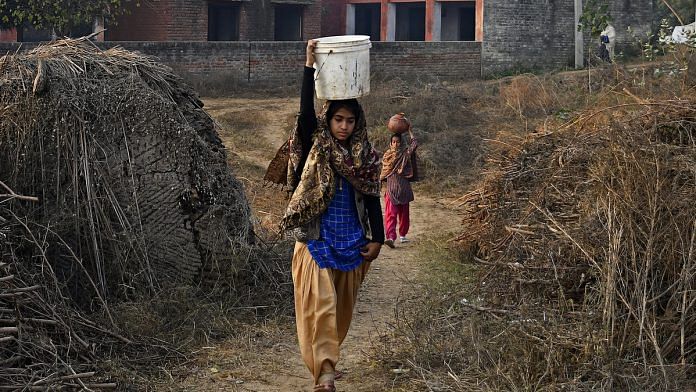New Delhi: Economists estimate that one-third of India’s population could have been living in poverty in 2017-18 if the shocking fall in the real monthly per capita consumption expenditure reported by Business Standard Friday is anything to go by.
The paper quoted unreleased National Statistical Office survey data as showing that consumer spending fell for the first time in four decades in 2017-18 — by 3.7 per cent — to Rs 1,446 from Rs 1,501 in 2011-12. This downward trend was led by a fall in rural expenditure, which declined to Rs 1,110 in 2017-18 as against Rs 1,217 in 2011-12. Food spending also contracted in rural areas.
The NSO report was due to be released in June, but has not come out so far.
The data indicates that nearly 32 per cent of the population could have been living in poverty in 2017-18, 10 per cent more than in 2011-12.
‘Poverty rate has increased’
P.C. Mohanan, former chairman of the National Statistical Commission, said the poverty line is determined by consumption expenditure, and a fall in the monthly expenditure means that the poverty rate has increased.
“The extent to which the poverty rate has increased will depend on the distribution of the expenditure. But typically, it is unlikely that the rich would have cut down their consumption. It would be the bottom 10-20 per cent of the population that has cut down on their spending,” he said.
Himanshu, associate professor at Jawaharlal Nehru University, said consumption expenditure data used for determining the poverty line in 2011-12 is comparable with the consumption expenditure data for 2017-18.
“A rough back-of-the-envelope calculation would suggest that the percentage of people in poverty has increased by at least 10 per cent and will be over 30 per cent now,” he said.
“Ideally, the NITI Aayog should have done the poverty estimates based on the data and released the estimates,” he added.
Also read: Unreleased NSO survey data shows 3.7% fall in consumer spending for first time in 4 decades
Impact of demonetisation and GST
The numbers reinforce the adverse impact of demonetisation, announced in November 2016, and the goods and services tax implemented in July 2017, especially on the lower income category that has been faced with job losses and industry shutdowns.
The numbers also exert pressure on the Narendra Modi government that is already reeling under criticism about its management of the economy.
Economic data released in the last few months has showed that the Indian economy is facing a sharp deceleration in growth. Data also shows that unemployment rate has been increasing steadily.
The data will increase criticism of the government’s inability to deliver on its poll promises of raising farmer incomes, generating jobs and alleviating poverty.
Also read: Slow economic growth is both immoral and anti-national. Don’t ignore falling GDP rate







Only 10% increase in poverty?? Another Modinomics??
Why hide stuff ? Figures of farmers’ suicides, unemployment, household consumption. The next question, Why make stuff up, about GDP growth, the most foundational statistic for the economy. So many people who should have been raising hell are quiescent, while the cooped are telling fairy tales. 2. Behold the growing cleavage between how things are being reported in the domestic and the foreign media. Foreign governments and investors know what the true picture is. While deciding to engage with India or invest, they will be unsentimental. This is the cost of allowing ideology to overwhelm pragmatism in all national endeavours.
… coopted …